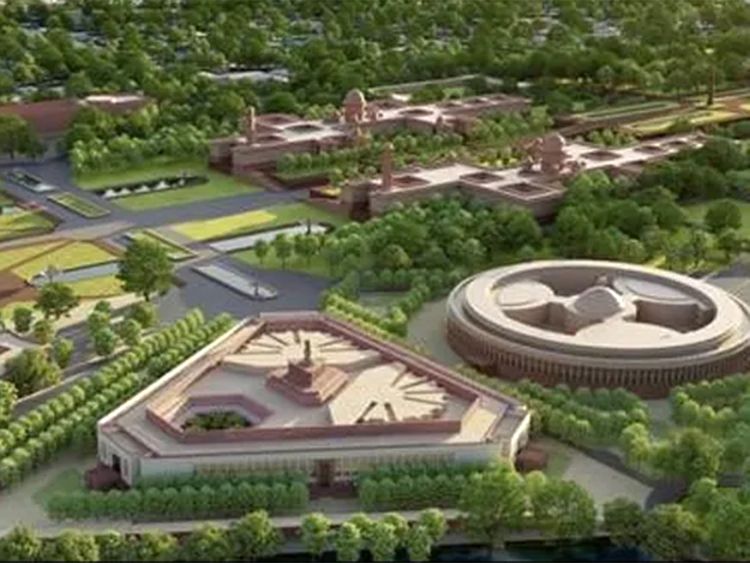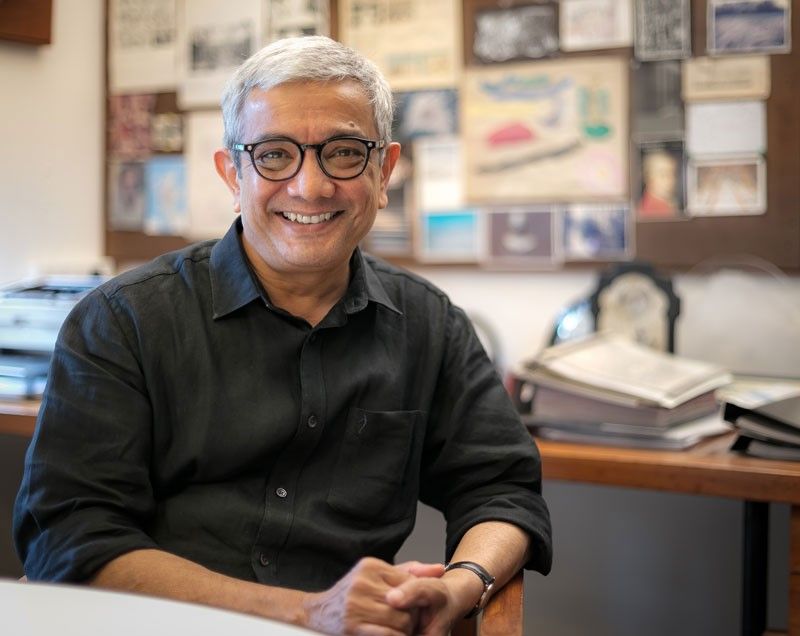Hyderabad : 04/06/2021
Central Vista will modernise India’s governance'
Architect of Narendra Modi's dream project in an exclusive conversation with *Gulf News*

Since India's Independence no construction project has created as much controversy as the construction of the new parliament and ministry offices in New Delhi.
The project, known as the Central Vista, has been described by its critics as “digging away at and destroying the roots of India’s freedoms and cultures.”
At the heart this dispute is none other than India’s Prime Minister, Narendra Modi, who initiated this grand project. Critics, opposed to his politics, have been vociferous in their rejection.
Bimal Hasmukh Patel is the man who is planning, designing and overseeing the construction of Central Vista. He spoke exclusively to Gulf News on the Prime Minister’s brief to him, on criticisms and on the finer aspects of the project.
There is huge criticism against the Central Vista project. How do you take it?
The criticism bothers me. No sensitive person can be insulated. The kind of opinions that are being voiced and the kind of images that are being created, does affect us. Most of this criticisms is due to lack of adequate information about the project in the public realm. This project is about improving infrastructure of the governance. It is about improving public spaces, about protecting and improving cultural heritage.
Critics have dubbed the project an assault on “freedoms and cultures”. Your take?
Most of the fears are ill-founded. I assure you that there will be just about 10% increase in number of people who will work in these new offices. So, traffic won’t increase. This is India’s seat of government. You serve no purpose by creating a new city somewhere else. This is a historical city. Central Vista is important for people of Delhi and for the tourists who come here. This project will also modernise governance.
Are you demolishing many iconic buildings?
National Archives building is an original Edwin Lutyens building. It’s a superb building. It will stay. Behind it is an extremely poor-quality annex which was made in 1991. That will be demolished after a new annex is built as it doesn’t serve the purpose.
National Museum has about 30,000 square metres of built space. It is not able to exhibit even 10% of what the museum has. Besides being inadequately sized, it also encroaches upon the Central Vista. The South and North block (where National Museum will move) are five times bigger. National Museum will be able to exhibit more.
Our historical cultural heritage will live on Raisina Hill and people will be able to visit those buildings. It’s like the palace of a king being converted into a museum. Symbolically it represents a deepening of the Republic as the government will function from the plains. The North and South block was built on a hill specifically to establish the dominion of the British government over the people of India.
This iconography of power was deliberate and spelt out by the architect Herbert Baker. We aren’t talking about something that was hidden agenda. Now, its being reversed. The government will be on plains and the cultural institutions on the hill.

What was the brief Modi gave you when you first met him for the project?
Believe me — and many may not — the Prime Minister harped only on functionality of the place. He wanted all the facilities for the people. He just said, ‘Vyavastha karo' (create facilites). He asked us to meet everybody. From the staff serving tea to the Speaker and Members of Parliament. His main concern was functionality.
We presented the design of the office buildings to different levels of staff from 23 ministries. They gave us valuable feedback and suggestions. To observe what a day is like for government functionaries from ministers to drivers, our team tagged them from morning to evening. Nothing pleases the Prime Minister more than accounts of all efforts that we have made in this direction.
How sensitive are you about the responsibility of building something that would last more than a century?
It is a great and tremendous responsibility. We are recasting the symbol of the country. It’s a difficult challenge at one level because in small country there is consensus on such issues. India is not a small place. We have people who are very advanced. Their sensibilities, attitudes, beliefs are among the avant-garde of the planet.
There is other part of India that lives decades behind them. They are still transforming, still changing. So, when you have such varied people, with varied beliefs, one may say its very difficult to find out what’s the right thing to do or how to attain consensus.
We may only try to find the fine balance that works at this time. What future will say is a different story. This is the aesthetic challenge that I and my team are facing. We want different people to see and read new Central Vista and feel “this is ours.”
What will happen to trees in the Central Vista Avenue?
Originally there were 453 trees on the Central Avenue. Today there are around 3000 large trees planted much after Lutyen’s history. Nothing is going to change in public places. Less than 20 trees will be affected to make ways for public toilets. These will be transplanted elsewhere. The trees will remain. Better parking and amenities will come up. We are laying better, more robust footpaths. Paving will be like the best world over.
Is it true that PM’s house is being built on 15 acres of land?
No, it’s not on 15 acres. When we finalise plans, you will see that it will be more or less the same as today, where one family can live. Prime Minister Modi lives alone but the Prime Minster’s house must have provisions for a family. It will be like house with nothing particularly grand about it.
The new home for the PM will be tucked away near South Avenue where currently there are hutments. Its location will be right next to the Prime Minister’s office and because of this disruptions to normal traffic will be minimised.
Why have you opted for a triangular shape of the parliament?
The triangular shpae works best for the shape of the plot and for the functions that we will eventually put inside the edifice. It’s for that purpose only. It’s a pure form like a circle. The triangle is a part of every sacred geometry. Whether its Hindu, Islam or Christianity. Architects see what is the purpose of design and time in which we live in. There are no absolute standards for the design of the edifices.
You have received a lot of flak. Is it you they are criticising or is this aimed at the Prime Minister?
The criticism is mainly because of lack of information and what this project signifies. This project is much more than me or any community of architects or politicians. It belongs to the people of India. I am not doing it for the present government or for myself. I am doing it for the larger idea of India.
No comments:
Post a Comment